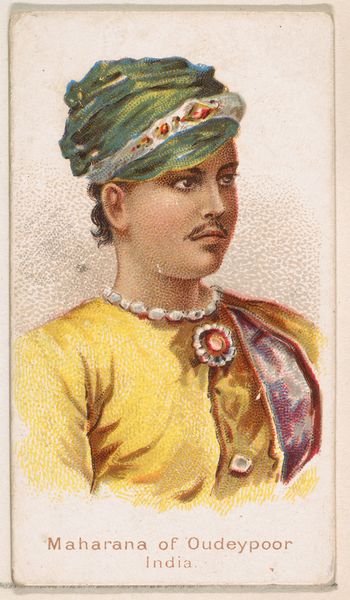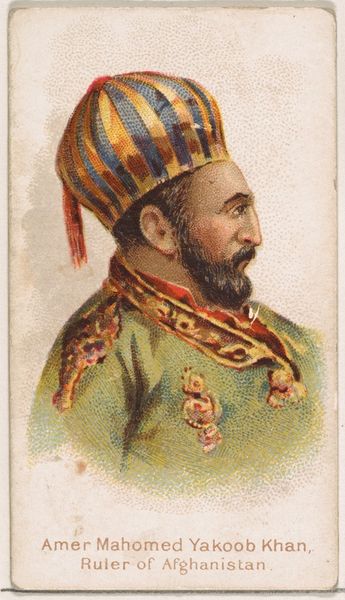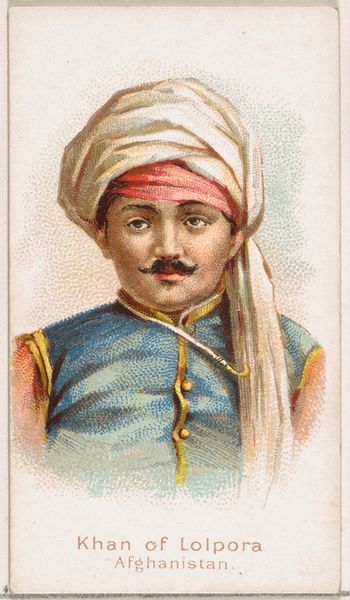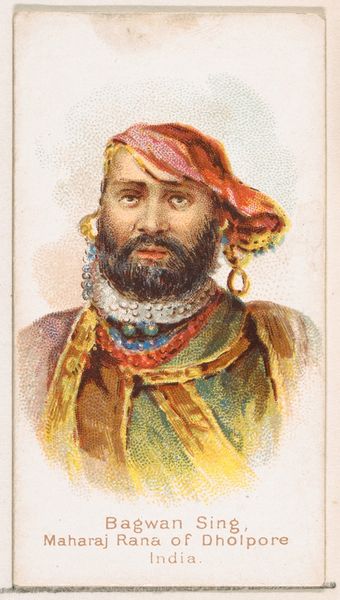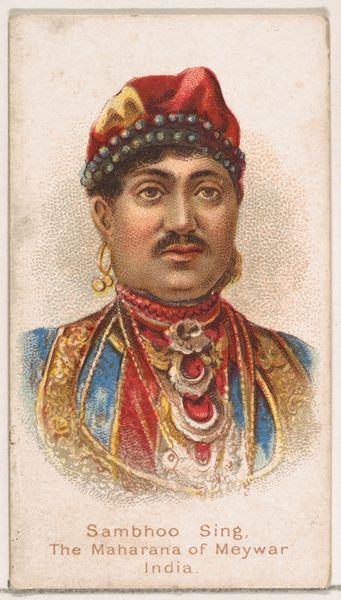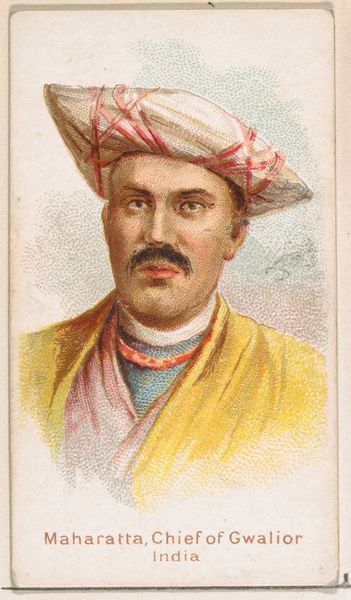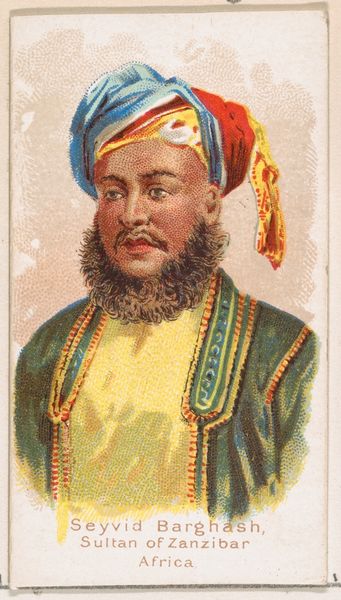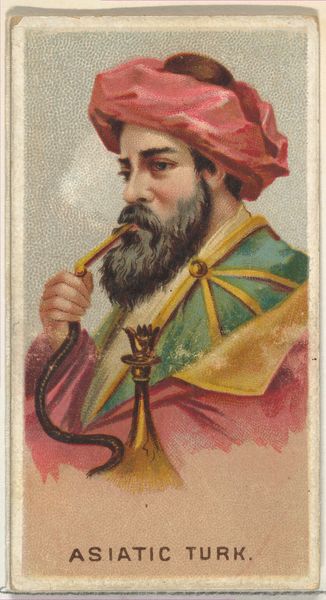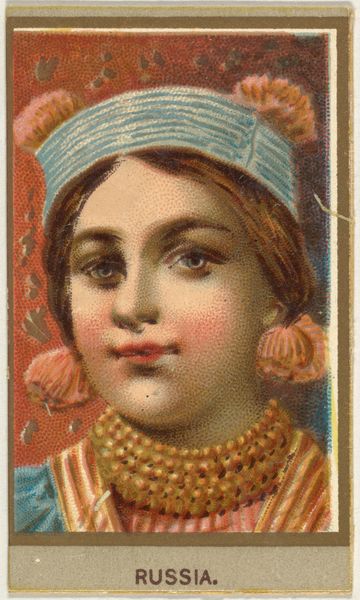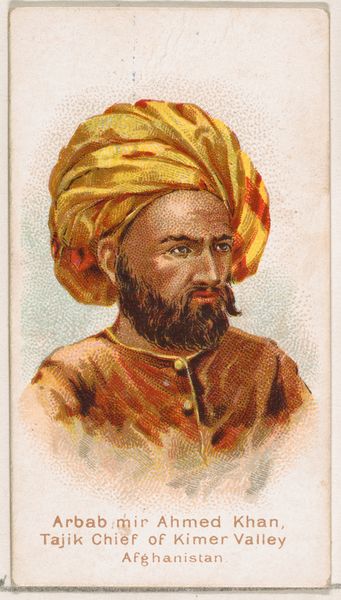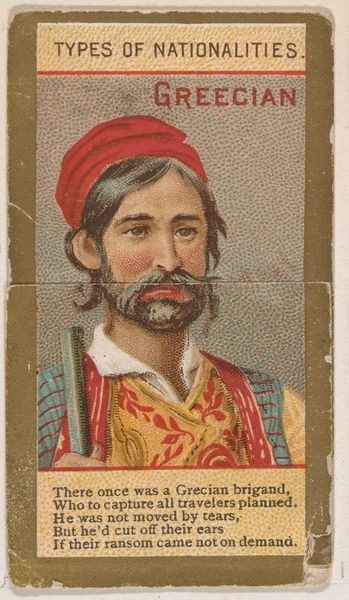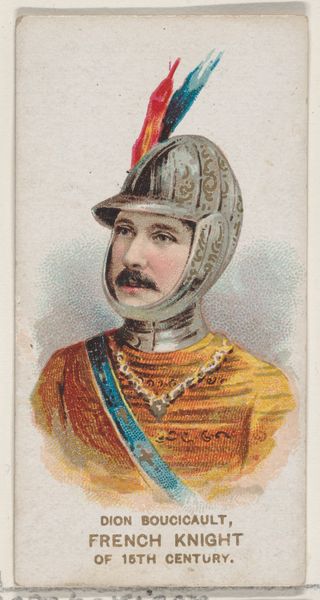
Maharao Jajah of Ulwur, India, from the Savage and Semi-Barbarous Chiefs and Rulers series (N189) issued by Wm. S. Kimball & Co. 1888
0:00
0:00
drawing, print
#
portrait
#
drawing
# print
#
asian-art
#
miniature
Dimensions: Sheet: 2 11/16 × 1 1/2 in. (6.8 × 3.8 cm)
Copyright: Public Domain
Curator: This chromolithograph, produced by Wm. S. Kimball & Co. in 1888, is from a series entitled "Savage and Semi-Barbarous Chiefs and Rulers," and it depicts Maharao Jajah of Ulwur, India. Editor: There's a stillness about this image, a kind of imposed formality through the tight composition and almost flattened space, despite the modeling on the face. Curator: Indeed. Let's consider the formal aspects: notice how the artist has rendered the textures – the rough stippling implying fabric, juxtaposed with the smooth areas of the face. The color palette, although limited, provides a study in contrasts: warm yellows and reds play against the cooler turquoise of the turban. Editor: The choice to frame him in this way—as an exotic curiosity, if we consider the series title—speaks volumes about the cultural attitudes of the time. It's loaded with visual cues that create an immediate impression of otherness. Curator: Precisely, and consider the reduction to mere color, without great attention to line: a focus on surface rather than depth. These miniatures, trading cards essentially, flattened cultures into consumer products, highlighting the superficial over genuine representation. Editor: Symbols carry immense power, and I'm struck by the pearls – what do they signify? Wealth, status, access to global trade routes? And that vibrant red turban… what statements about power or spirituality were intended? Curator: Within the series' intended context, these accoutrements serve as almost anthropological markers—signifiers of the ruler's cultural identity reduced for popular consumption. Kimball and Co. use such visual shorthand as both portraiture and collectible. Editor: The echoes of cultural memory ripple even now. As a viewer, you must deconstruct its implied biases and historical assumptions even as you respond to the miniature’s artistry. Curator: Viewing this piece compels us to interrogate the inherent power dynamics present in representation, particularly across cultural divides. It forces an uncomfortable acknowledgement. Editor: Agreed, viewing this piece truly gave me cause to reflect on my own expectations of representation.
Comments
No comments
Be the first to comment and join the conversation on the ultimate creative platform.
